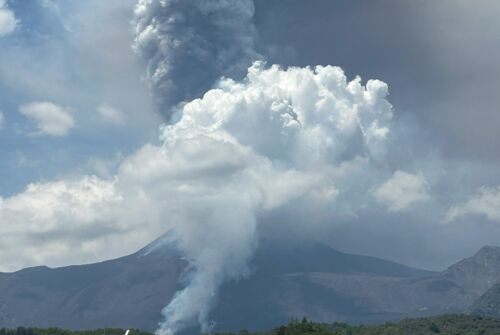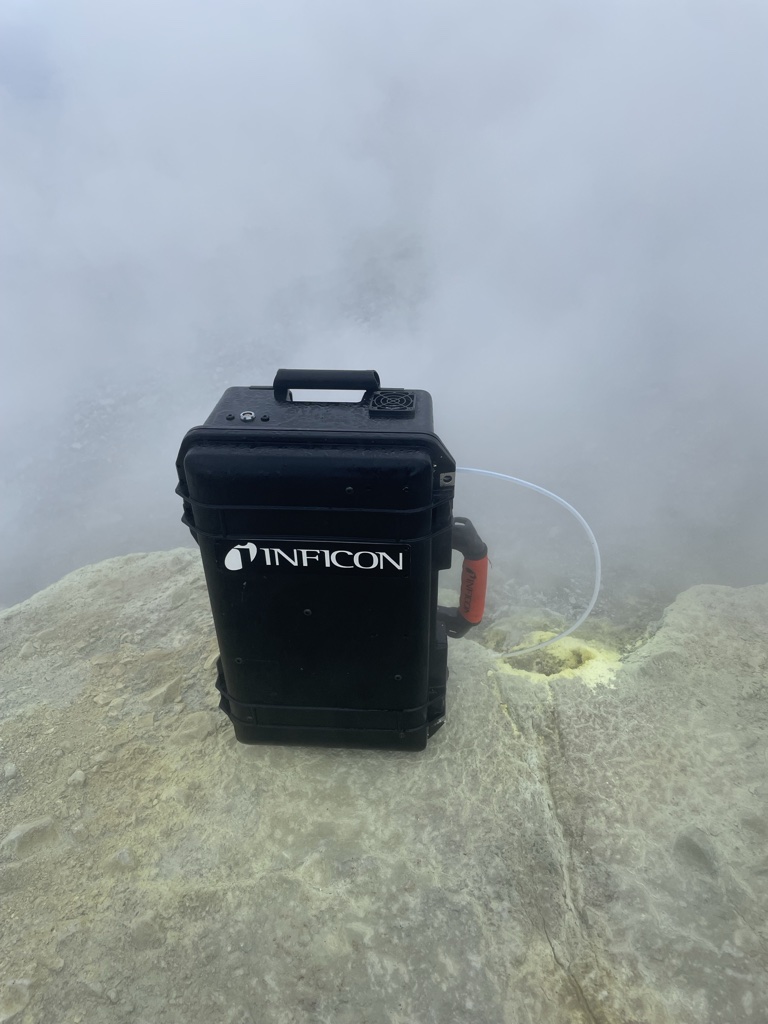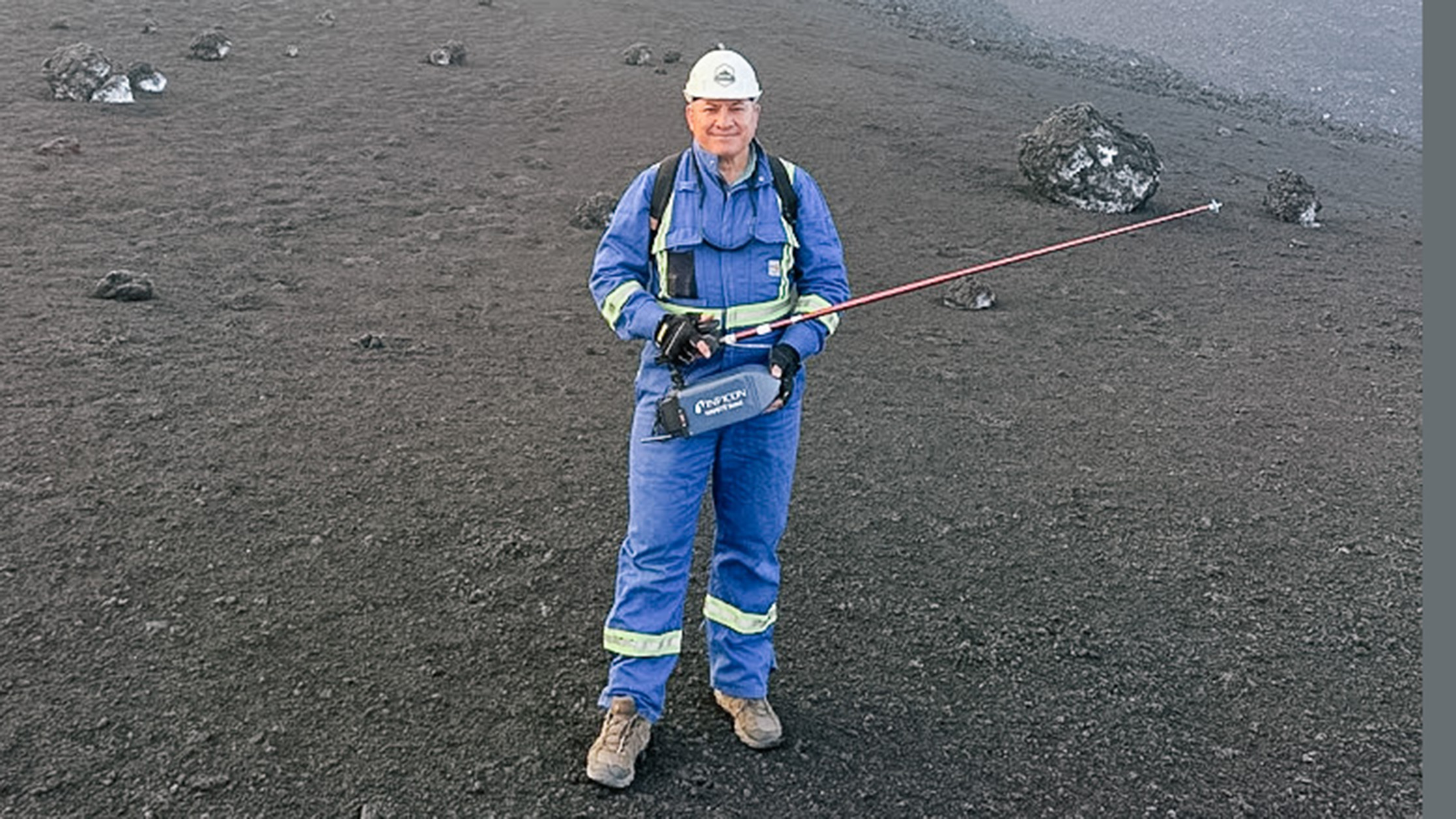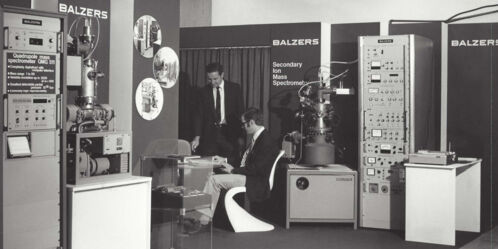Into the Plume: The R&D Journey Behind Volcano Monitoring at INFICON
INFICON turns research challenges into innovations, advancing volcanic gas monitoring and prediction worldwide.

At INFICON, research and development aren’t just about advancing technology—it’s about solving real-world problems. From rigorous product testing to close collaboration with scientists in the field, INFICON builds instruments that detect gases to solve customer pain points and real-life needs. One powerful example of this is a project led by Dr. Andres Diaz that uses gas sensors, gas chromatography and mass spectrometry to detect, quantify, and monitor gases to better understand what happens right before volcanos erupt. With these insights, volcanologists can better predict volcanic eruptions and potentially save lives.
Dr. Diaz is a university professor and senior research scientist at INFICON focused on emerging technologies and new markets. His work bridges science and innovation, contributing to projects in earthquake prediction, space exploration, and volcanic gas analysis. His passion for volcano research began in graduate school, and today he uses INFICON technology to build instruments that detect warning signs before environmental catastrophes happen.
His recent work at Mount Etna, Italy, shows how R&D at INFICON is making a global impact. Here’s a look at some of the key challenges our researchers sought to break through this project.
The Challenge: Technology Limited to Labs
Traditionally, volcanic gas sampling involved manually collecting samples at the site and bringing them back to an off-site lab for analysis Not only was this dangerous, but sampling wasn’t frequent enough to be impactful, there was no real-time insight, and the time it took to transport samples to lab could result in compromised data.
Early mass spectrometers were not ideal for this research because they were not portable, were too bulky to conduct situ analyses, and required stable power sources. They also weren’t well equipped for harsh environments.
The Breakthrough: Portable Mass Spectrometry
The development of field-deployable mass spec systems was transformative to this research. Diaz worked with teams to design a portable mass spectrometer that was small enough to fit in a backpack. This design, using the Transpector® MPH in a Pelican® case, allowed scientists and researchers to conduct in situ measurements for the best and most accurate measurements.
The choice of mass spectrometer for the backpack model was critical for achieving precise measurements on volcanoes. The Transpector MPH is the fastest scanning quadrupole mass spectrometer available commercially. Its ability to rapidly measure multiple gases and conduct isotopic analysis in real time provided the critical capability needed for understanding volcanic behavior.


The Challenge: Navigating Dangerous Terrain
Even before a volcano erupts, the environment is dangerous because it’s rough, hot, and unpredictable. When its activity increases or it’s erupting, the threat becomes real and dangerous and escalates the need for continuous monitoring. Humans can’t risk their lives by going into an erupting volcano, but the science isn’t complete without the data.
The Breakthrough: Robotic Payloads for Hazardous Environments
To overcome the possibility of a dangerous, hostile environment, the team developed the solution of mounting INFICON technology onto legged robots and drones.
The first drone equipped with the HAPSITE Scout—a multi-gas sensing payload prototype designed to be integrated into unoccupied aerial vehicles (UAV) to detect key volcanic gases such as CO2, H2S, SO2, and H20 in real time—was successfully deployed at the Stromboli volcano and Vulcano Island in 2022 and 2023. Originally developed as an accessory to HAPSITE® CDT, the INFICON gas chromatograph-mass spectrometer, the HAPSITE Scout also uses onboard sample collectors to gather gas samples on-site while measuring the plume, which can then be flown to another location for more in-depth GC/MS analysis. Building on the capabilities of HAPSITE, such as portability and real-time in-situ analysis in extreme environments, HAPSITE Scout makes it possible to conduct measurements via drone right at the source, without exposing the researcher.


In 2025, the team did its first volcano deployment of the ARAMMIS system (Autonomous Robots for Area Mapping, Monitoring, and In-situ Sensing), in partnership with ETH Zurich’s Robotic Systems Lab. With the INFICON Transpector MPH mounted on ETH Zurich’s legged robots, the team could send a system that could walk directly into the rim of an active crater and characterize the emitting gases, enabling real-time in-situ analysis in areas unreachable or too dangerous for humans.


Challenge: Machinery in a Hostile Environment
Volcanoes create a uniquely hostile environment for technology. Intense vibrations can destabilize or damage equipment, rugged terrain challenges the mobility and stability of robotic payloads, and corrosive gases like sulfur dioxide, hydrogen sulfide, HF, and HCl threaten to degrade exposed electronics on drones and robots. It is necessary to contemplate all these conditions to design systems that can endure such hostile environments.
The Breakthrough: Engineering for Extremes
To ensure reliability in such harsh conditions, the team developed and tested multiple iterations of the system, each one designed to withstand conditions more extreme than those encountered in the field. These included:
- Designing dampened support points for vacuum pumps to make the payloads more stable and robust with movements
- Designing cables connection and via so potential movements don’t short the wires
- Adding filters so particles from the volcano terrain don’t enter the mass spectrometer and close the inlet
- Creating protective housing on the backpack, robot, and drone design for ruggedization to prevent damage from movements, shakes, water, and vibrations
- Creating special coatings for the electronics to prevent corrosion from gases
From Bold Idea to Breakthrough Tools
Our volcano research is far from over. Each field deployment uncovers new variables, and each challenge inspires further innovation. That is the true nature of R&D at INFICON and its collaboration with research institutions and government agencies; it’s not just about delivering solutions but continuously refining them to meet the demands of the real world. From lab-bound instruments to rugged field-ready systems, the volcano project represents the future of harsh environmental sensing, making it safer, smarter, and more predictive.

Using gas sensing technology to enable key research at academic and government institutions to understand better what nature is telling us.

The INFICON Transpector® MPH quadrupole mass spectrometer successfully landed and operated on the lunar surface.

Learn how INFICON revolutionized industrial mass spectrometry, from the QMG 511's development in the 1970s to today's advanced gas analysis technologies.